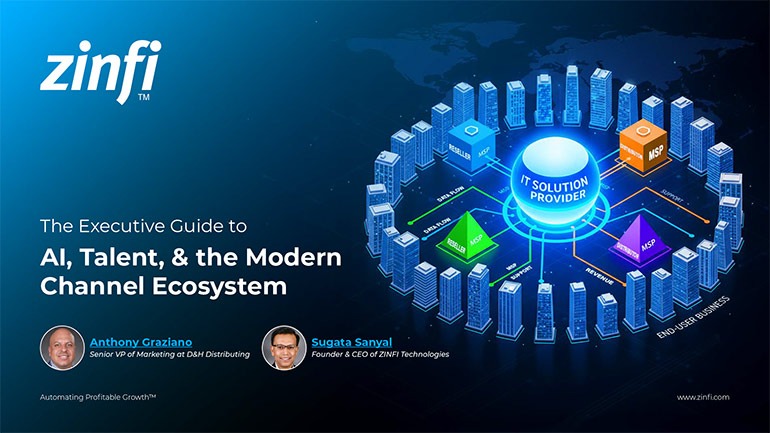Glossary - How to - Partner Relationship Management Onboarding
How to Implement Partner Relationship Management Onboarding?
Introduction
Partner Relationship Management (PRM) onboarding integrates new partners into a business ecosystem to ensure their success and productivity. Effective onboarding enhances collaboration, streamlines communication, and provides partners access to the necessary tools and resources to thrive. Organizations in highly competitive markets must adopt structured PRM onboarding processes to build strong, mutually beneficial relationships.
With the advancement of Partner Management Automation (PMA) tools, businesses can simplify onboarding, reduce manual processes, and improve efficiency. PRM solutions provide centralized access to training materials, enable automated workflows, and track partner performance, ensuring smooth transitions for new partners. A well-executed onboarding process enhances partner engagement, accelerates time-to-revenue, and strengthens brand loyalty.
Key Takeaways:
Establish Clear Onboarding Objectives:
To build a structured PRM onboarding process, define clear goals such as:
- Setting expectations for partners regarding roles and responsibilities.
- Providing a comprehensive understanding of products and services.
- Ensuring partners align with company values and strategies.
- Establishing key performance indicators (KPIs) to measure success.
Organizations should document their onboarding objectives and communicate them effectively using a PRM platform to streamline partner engagement.
Develop a Comprehensive Onboarding Plan:
A structured onboarding plan ensures partners receive essential information in a logical sequence. Key components include:
- Welcome packages with necessary documents and resources.
- Training programs covering products, services, and compliance requirements.
- Access to PRM software for seamless collaboration.
- Regular check-ins to address questions and provide support.
A well-defined onboarding plan enhances engagement and speeds up the partner’s ability to generate revenue.
Leverage PRM Technology for Automation:
PRM solutions help automate partner onboarding by:
- Centralizing partner resources and training materials.
- Automating workflows such as contract signing and certification.
- Tracking partner performance and engagement levels.
By leveraging PRM technology, organizations can reduce onboarding time and enhance partner productivity.
Provide Ongoing Training and Support:
Onboarding doesn’t end after the initial setup; continuous learning is essential. Companies should:
- Offer periodic training sessions and certification programs.
- Provide dedicated account managers for ongoing support.
- Create a knowledge base with FAQs and troubleshooting guides.
Ensuring ongoing training strengthens partner relationships and aligns them with evolving business objectives.
Measure and Optimize the Onboarding Process:
Tracking the success of PRM onboarding helps organizations refine their strategies. Key metrics to monitor include:
- Partner engagement rates.
- Time taken for partners to complete onboarding.
- Revenue growth attributed to new partners.
Regularly reviewing these metrics allows businesses to improve their onboarding processes and maximize partner success.
Summary of Key Takeaways:
- Set clear onboarding objectives to align partners with business goals.
- Develop a structured onboarding plan with training and resources.
- Use PRM technology to automate workflows and improve efficiency.
- Offer continuous training and support to keep partners engaged.
- Measure onboarding success and refine strategies for better outcomes.
Key Examples:
- Automotive Manufacturing: In the automotive industry, PRM onboarding ensures that suppliers and dealers understand the latest vehicle models, compliance regulations, and sales strategies. A structured onboarding process helps streamline collaboration and accelerate sales performance.
- Consumer Electronics: Consumer electronics brands onboard retailers and resellers with in-depth training on product specifications, marketing materials, and customer service protocols. PRM platforms provide instant access to updated information, improving sales effectiveness.
- Energy Production: Energy companies onboard partners with safety training, regulatory compliance guidelines, and technology overviews. A PRM system helps track certification progress and ensures all partners meet industry standards.
- Financial Services: Banks and financial institutions use PRM onboarding to educate brokers and advisors on compliance regulations, financial products, and risk management strategies. Automated workflows streamline document verification and approval processes.
- Food and Beverage: Distributors and retailers in the food industry benefit from structured PRM onboarding that includes supply chain management, compliance regulations, and brand standards. PRM technology ensures smooth communication and operational efficiency.
- Healthcare Services: Healthcare providers onboard partners with training on patient data privacy laws, compliance protocols, and medical product usage. PRM software tracks partner certifications and regulatory adherence.
- Information Technology: IT companies use PRM onboarding to equip partners with software training, technical support documentation, and marketing strategies. PRM solutions facilitate seamless collaboration and knowledge sharing.
- Pharmaceutical Development: Pharmaceutical firms onboard distributors with detailed product training, regulatory compliance guidance, and sales support tools. A PRM platform centralizes all necessary resources for easy access.
- Retail Industry: Retail brands onboard franchisees and resellers with brand guidelines, inventory management systems, and customer service training. PRM systems help streamline operations and maintain brand consistency.
- Telecommunications: Telecom providers use PRM onboarding to educate resellers and service partners on network infrastructure, pricing models, and customer support protocols. Automated training modules improve partner readiness and efficiency.
Conclusion:
Effective Partner Relationship Management (PRM) onboarding is critical to building strong, productive partnerships. Businesses can optimize their partner onboarding process by setting clear objectives, developing a structured onboarding plan, leveraging PRM technology, providing continuous training, and tracking performance.
A well-structured onboarding strategy enhances partner engagement, accelerates revenue generation, and strengthens brand loyalty. As industries evolve, organizations must adapt their PRM onboarding strategies to maintain competitive advantage and drive long-term success.
Associated Keywords:
- Partner Onboarding Best Practices
- PRM Software for Onboarding
- How to Automate Partner Onboarding














